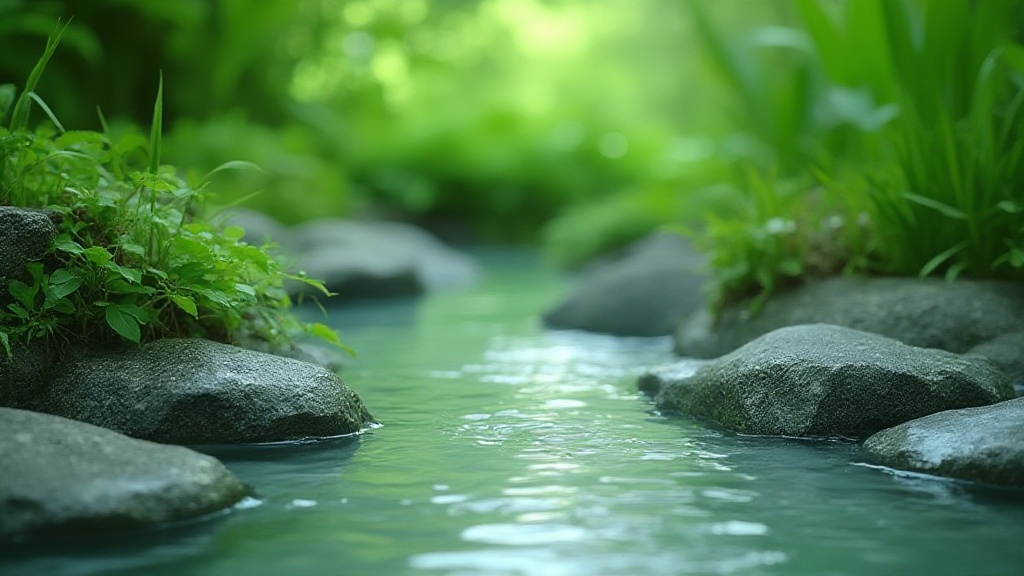
The integral role of relaxation significantly impacts your health journey. Relaxation techniques promote mental clarity and enhance emotional wellness.
Engaging in regular relaxation practices not only fosters physical health but also supports overall wellbeing.
Improved sleep quality, stemming from relaxation, leads to better daily performance and emotional stability.
Achieving serenity through relaxation rituals enables individuals to recharge and face life’s challenges with renewed energy. Ultimately, incorporating relaxation into your lifestyle leads to a healthier and more balanced existence.
Understanding Stress Relief Techniques
Exploring various methods to alleviate stress reveals numerous ways to improve your quality of life.
Yoga and exercise provide effective means for promoting stress relief and enhancing mood. Engaging in creative outlets, such as art or music, serves as valuable therapeutic tools for relaxation.
Regular practice of these techniques is essential for maximizing their effectiveness.
Establishing a routine that includes specific times for relaxation activities can significantly contribute to your overall mental wellbeing.
Creating a calm environment at home enhances your focus, facilitating the integration of these practices into daily life.
Effective Relaxation Techniques
- Mindfulness meditation: Encourages tranquility and emotional stability.
- Deep breathing: Promotes calmness and aids in stress management.
- Progressive muscle relaxation: Enhances recovery and rejuvenation.
- Guided imagery: Supports holistic health through visualization.
- Aromatherapy: Engages sensory experiences for emotional wellness.
- Nature therapy: Immerses individuals in serene environments, fostering recovery.
“Relaxation techniques are essential for maintaining a healthy lifestyle and emotional stability. ”
Incorporating relaxation techniques into your daily life can lead to improved focus and creativity. Taking short breaks throughout the day enables individuals to recharge and enhance productivity. Engaging in hobbies provides a necessary escape, facilitating mental clarity and emotional balance. Prioritizing self-care fosters a positive mindset, improving interpersonal relationships and community well-being.

How Mindfulness Enhances Relaxation
Integrating mindfulness into daily routines significantly enhances relaxation. By concentrating on present moments, mindfulness practices effectively reduce anxiety and improve mental clarity.
Techniques such as meditation and deep breathing exercises serve as effective methods for achieving these benefits.
Simple practices, like mindful eating or walking, can also be seamlessly incorporated into the day to cultivate calmness.
These activities not only alleviate stress but also foster a sense of peace. Regular practice of mindfulness meditation allows individuals to achieve deeper relaxation responses, leading to enhanced focus and a healthier state of mind, which ultimately supports overall emotional wellness.
The Role Of Tranquility In Wellbeing
Establishing tranquility plays a significant role in enhancing emotional health.
By creating a serene environment, individuals can more effectively manage stress and cultivate a sense of balance. Several strategies for fostering tranquility include:
- Nature Immersion: Spending time in natural settings enhances tranquility and promotes overall wellness.
- Quiet Reflection: Engaging in activities such as journaling or meditation provides meaningful moments for self-awareness.
Actionable steps for creating tranquil spaces in home or work environments encompass:.
- Calming Colors: Use soft, soothing colors to promote relaxation.
- Soft Lighting: Incorporate gentle lighting to create a peaceful atmosphere.
- Zen Spaces: Designate areas specifically for quiet time and personal reflection.
These environments encourage wellness and rejuvenation, making it easier to navigate life’s stresses with a positive mindset.
Mindfulness and Tranquility
- Research shows that mindfulness practices can reduce anxiety levels by up to 58%.
- Engaging with nature for just 20 minutes can significantly lower cortisol levels, promoting tranquility.
- Studies indicate that soft lighting can improve mood and increase feelings of relaxation by 30%.
- Creating designated quiet spaces has been linked to a 40% increase in productivity and emotional well-being.
Benefits Of Meditation For Mental Clarity
Consistent meditation practices provide profound cognitive benefits, particularly in enhancing mental clarity. Regular meditation significantly improves decision-making skills, as the brain learns to process information with greater efficiency.
This clarity enables individuals to engage in more informed choices.
Additionally, meditation fosters enhanced creativity and problem-solving abilities, allowing the mind to generate innovative solutions.
For beginners looking to establish a meditation routine, start with just 5 to 10 minutes daily, focusing on breath awareness to cultivate mindfulness. Gradually increasing the duration promotes sustained focus and mental rejuvenation, seamlessly integrating meditation into daily life.
Exploring Deep Breathing For Calmness
Deep breathing techniques profoundly impact the body, triggering the relaxation response that calms the nervous system.
This simple practice lowers heart rates and decreases stress hormone levels, contributing to overall stress relief. As oxygen flow increases to the brain, mental clarity and calmness are enhanced.
Various deep breathing techniques, such as diaphragmatic breathing, involve inhaling deeply through the nose and allowing the abdomen to expand before slowly exhaling.
This technique can be particularly beneficial before public speaking or during stressful meetings, where quick access to calmness is essential.
Incorporating deep breathing into everyday moments can foster emotional stability and enhance overall well-being.
Techniques For Effective Deep Breathing
Diaphragmatic breathing serves as a fundamental technique that promotes relaxation and reduces tension. This involves taking a deep breath, allowing the diaphragm to fully engage, followed by a slow exhale.
Practicing this method can create a serene state of mindfulness and enhance mental clarity.
Situations for Deep Breathing
Various situations can benefit from deep breathing practices. For instance, during high-pressure work scenarios, taking short breaks to engage in breathwork can significantly lower stress levels.
Similarly, engaging in deep breathing before crucial conversations can foster a sense of tranquility and enhance interpersonal communication.
Meditation and Deep Breathing
- Studies show that regular meditation can improve cognitive function and decision-making abilities.
- Deep breathing techniques are proven to lower heart rates and reduce levels of stress hormones in the body.
- Practicing diaphragmatic breathing can lead to enhanced emotional stability and overall well-being.
- Engaging in breathwork during high-pressure situations can significantly lower stress and improve communication.
Why Yoga Promotes Emotional Stability
Yoga serves as a transformative practice that enhances emotional stability through its combination of physical postures and mindfulness. Research supports the idea that engaging in yoga cultivates resilience and reduces symptoms of anxiety.
Physical postures, or asanas, are designed to build strength and flexibility, offering a solid foundation for emotional wellness.
Improved body awareness leads to greater self-awareness, which enhances emotional balance.
Breath control plays a significant role in regulating stress responses, promoting calmness and tranquility.
Mindfulness integrated into yoga practice encourages present-moment focus, effectively reducing anxiety. For beginners, simple yoga sequences such as the Child’s Pose and Cat-Cow Stretch can foster emotional grounding.
Embracing these practices can significantly enhance emotional stability and overall mental well-being.
The Role of Breathwork in Yoga
Breathwork, or pranayama, is an essential component of yoga that facilitates deep breathing and relaxation techniques. Engaging in breathwork can trigger the relaxation response, leading to stress reduction and enhanced emotional balance.
Incorporating breathwork practices within yoga sessions can deepen the connection between physical movement and mental clarity.
The Power Of Guided Imagery For Recovery
Guided imagery is a potent technique that aids in mental and physical recovery through visualization, promoting deep relaxation.
Research indicates that engaging in guided imagery can effectively activate the body’s relaxation response, essential for stress relief and healing.
To create effective guided imagery scripts, it is important to tailor them to individual needs, which enhances the therapeutic experience.
Effective guided imagery practices can lead to enhanced mental clarity and emotional wellness.
Steps for Creating Effective Scripts
Steps in scripting include identifying specific recovery goals and using descriptive, sensory language. Techniques such as Safe Place Visualization provide a serene mental space, allowing participants to feel secure.
Similarly, the Healing Light Exercise encourages individuals to visualize a healing energy enveloping their body. Both approaches contribute to improved mental clarity and emotional wellness, demonstrating guided imagery’s versatility in recovery processes.
Benefits of Guided Imagery in Therapeutic Contexts
- Facilitates relaxation and calmness.
- Enhances emotional stability and resilience.
- Promotes a sense of peace and well-being.
Incorporating guided imagery within therapy allows individuals to explore their thoughts and feelings in a safe environment. This technique can be effectively integrated with other therapies, enhancing overall recovery and emotional health.
| Yoga Benefits | Guided Imagery Benefits |
|---|---|
| Enhances emotional stability | Facilitates relaxation and calmness |
| Reduces symptoms of anxiety | Promotes a sense of peace and well-being |
| Improves body awareness and self-awareness | Enhances emotional stability and resilience |
How Aromatherapy Supports Relaxation Response
Aromatherapy significantly influences the relaxation response, utilizing essential oils renowned for their calming properties. These oils impact both psychological and physiological states, fostering mental clarity and enhancing emotional wellness.
Methods such as diffusion and topical application offer distinct pathways for these scents to reach the brain.
Diffusing essential oils in a calm environment creates a tranquil atmosphere, while topical application delivers localized effects that support stress reduction.
Essential oils like lavender, chamomile, and bergamot are especially effective for promoting stress relief.
Incorporating these oils into a daily routine can significantly enhance overall wellness. For optimal results, consider diluting oils appropriately—typically one to two drops mixed with a carrier oil for direct skin application.
This practice not only maximizes their calming effects but also safeguards against any adverse reactions. By integrating aromatic elements into mindfulness practices, individuals can cultivate a consistent stress management strategy that nurtures tranquility and balance.
Methods of Application
Utilizing aromatherapy effectively involves various methods of application that can enhance its benefits.
Diffusion is a popular technique that disperses essential oils into the air, allowing for inhalation and absorption through the respiratory system.
This method is especially useful during meditation or yoga sessions, as it creates a serene environment conducive to relaxation.
On the other hand, topical application allows the essential oils to interact directly with the skin.
This approach can provide immediate localized relief and promote emotional stability. Before applying oils, always ensure proper dilution, as this step optimizes the therapeutic effects while maintaining safety.
Engaging in these practices regularly can lead to a significant improvement in overall mental wellbeing and support a peaceful lifestyle.
Essential Oils for Relaxation
Several essential oils are particularly well-known for their ability to foster relaxation. For instance, lavender is celebrated for its ability to promote calmness and support restful sleep.
Chamomile not only aids in relaxing the mind but also supports physical health during stressful periods.
Bergamot can uplift mood while alleviating anxiety, making it a valuable addition to any relaxation ritual.
To effectively use these oils, consider incorporating them into self-care routines.
Simple practices such as diffusing oils during quiet time or utilizing them in therapeutic massage can enhance relaxation experiences. Establishing a peaceful atmosphere through these methods can significantly contribute to achieving deep relaxation and emotional wellness.
Aromatherapy and Relaxation
- Aromatherapy can lower cortisol levels, the hormone associated with stress, promoting a sense of calm.
- Studies show that lavender essential oil can improve sleep quality and reduce anxiety in various populations.
- Diffusing essential oils during meditation has been found to enhance focus and deepen relaxation experiences.
- Topical application of essential oils can provide immediate relief for stress-related physical symptoms, such as tension and headaches.
